When cooking or melting sugar, there’s a very high risk of burning it. Sugar is usually quick to melt and, therefore, in higher temperatures, it could be easily burnt. In these situations, it’s essential to know how to get burnt sugar off of a pan without damaging the pan or causing further hassle.
Everything About Burnt Sugar
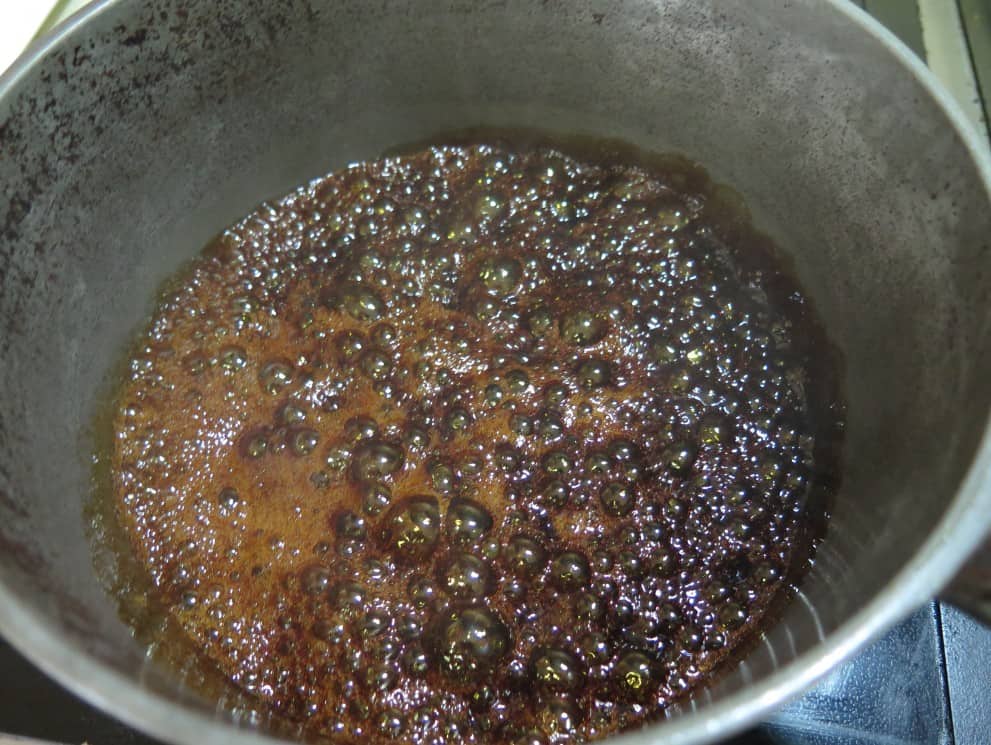
The process of burning sugar is usually an important step in some desserts like pound cake, burnt sugar cake, syrup topped cheesecake, and sometimes in beef and poultry recipes. This is usually in Trinidad and Tobago cuisine, but is also widely used in other areas of the world. This is usually termed “caramelized sugar.”
The term “burnt” sugar is quite a misnomer, as you don’t really burn the sugar. In fact, you need to avoid burning it so it doesn’t become bitter. Burnt sugar is relatively easy to make. However, when caramelizing sugar, it needs patience and focus.
You can’t leave your sugar on the heat as it would most probably get burnt and stick to your pan or your pot. When you encounter this sticky situation, it may be challenging and might cause quite a ruckus, especially if it’s your first time. Another thing about burnt sugar is that it can be stubbornly attached to the pan and therefore really hard to scrape or clean off the pan.
Easy Ways of Getting Burnt Sugar Off a Pan
There are many easy methods to try to get pan stains off your pans. However, burnt sugar stains can be a tougher opponent to get off a pan, so you might need to follow more specific rules and methods. Here are some methods that you can follow.
Baking Soda Method
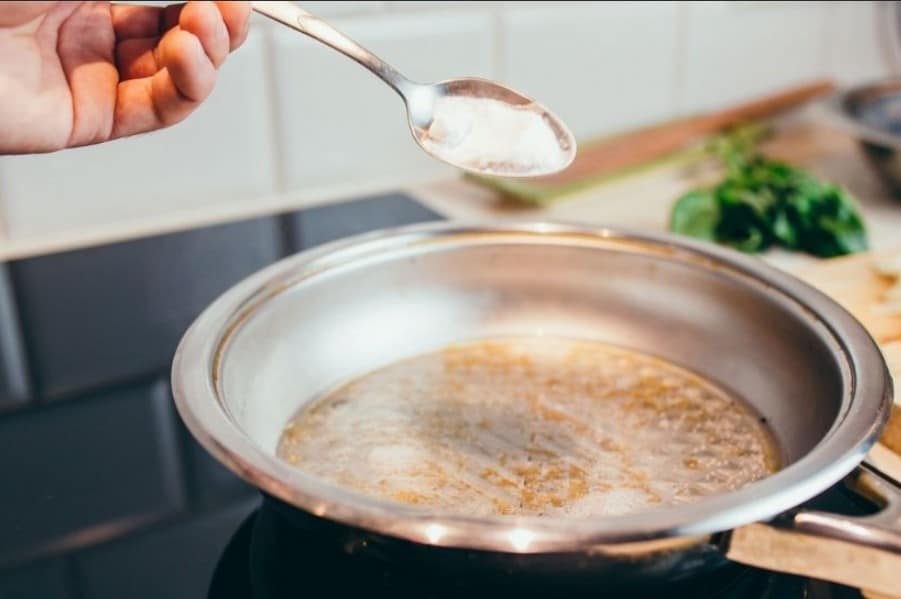
Baking soda has been very effective in cleaning and is involved in a lot of home-based cleaning processes. Baking soda has been popular for its abrasive characteristics and for being multi-purpose. For this method, you would need to prepare:
- 2 cups of baking soda
- Ample water to cover the bottom of the pan
Steps:
- Take the pan with the burnt sugar sticking to it and sprinkle baking soda onto it.
- Add water and make sure that it’s just enough to cover the bottom of the pan.
- Set your stove on low heat and allow the pan to simmer for 15 minutes. This depends on the size and the amount of the stuck burnt sugar. If you are dealing with larger bulks, then you can leave it on for 30–40 minutes.
- After the process, you can proceed to wash the pan as normal. The burnt sugar will supposedly fall off bit by bit.
Bar Keeper’s Friend (BKF)
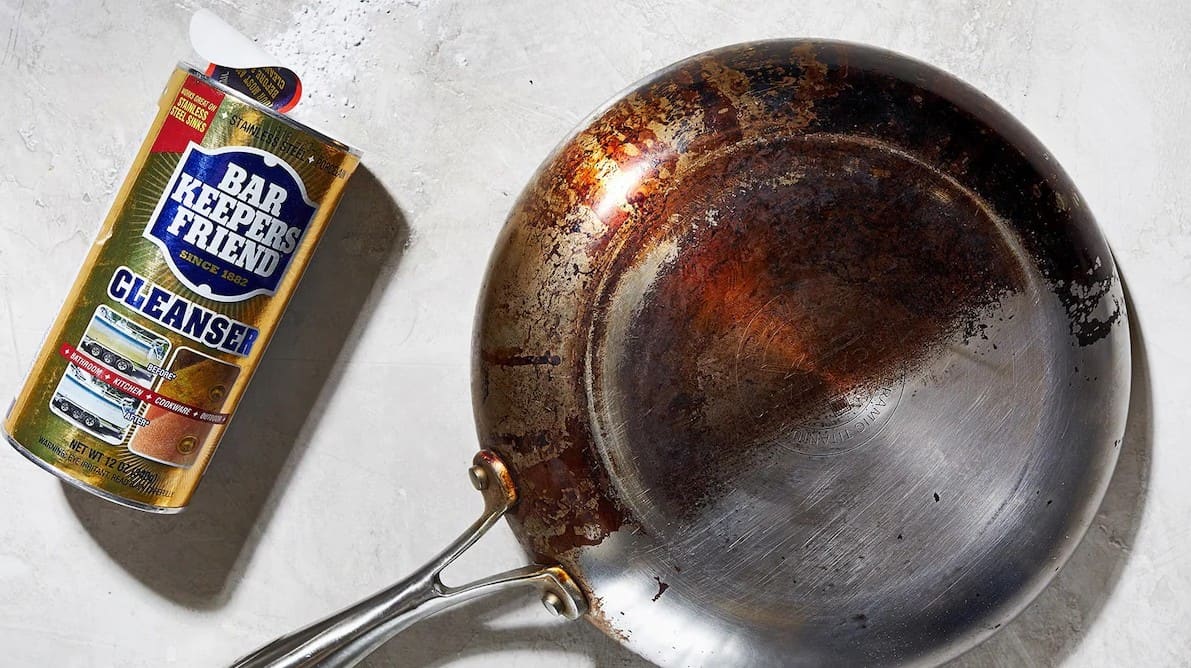
Bar Keeper’s Friend, or famously termed as BKF, is a surface polisher and cleanser used for countertops made of ceramic, fiberglass, tile, stainless steel, porcelain, and many other materials. BKF is commonly used for countertops, but this strong powder is also helpful in removing stuck burnt sugar from your pans.
However, it’s important to note that you need to check the material of your pan and cross-check if it is compatible with BKF to avoid damage to the pan. For this method, you would need to prepare the following.
- BKF in powder form
- A sponge (specifically for cleaning dishes or pans)
Steps:
- Get the pan and sprinkle BKF onto the surface of the pan.
- Leave it for 2 to 3 minutes.
- Take the cleaning sponge and gently wipe and rub the surface in circular motions. This will help to dislodge the bits of burnt sugar. Scrubbing will not be required at this point because the cleaner will have already started to break down the sugar.
- When you are dealing with more stubborn bits and bulks of burnt sugar, you can add a bit of water to the powder and create a paste with the combination.
- Leave the paste on for 2-3 minutes before using the sponge.
- You can now get the cleaning sponge and proceed to make circular motions to loosen the burnt sugar from the pan.
Hydrogen Peroxide Method
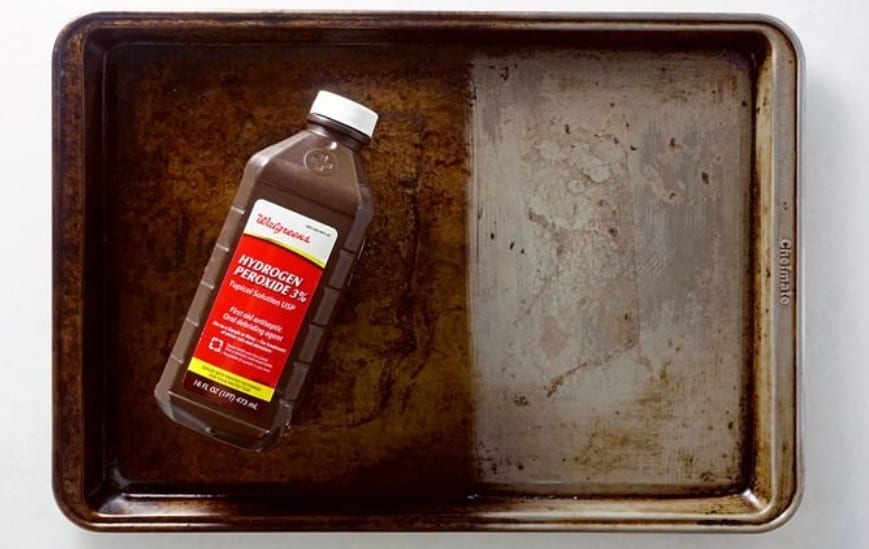
Hydrogen peroxide is also a good way of removing stains without scrubbing. For this method, you will need to prepare hydrogen peroxide and your stove.
Steps:
- Add enough hydrogen peroxide to cover the bottom of the pan.
- Prepare your stove and bring it to a boil.
- Make sure that you open a window and that the room is well ventilated, as boiling hydrogen peroxide can be smelly.
- After boiling, you can reduce the temperature level and bring it to a simmer for 10 minutes.
- You can start getting the stains off the pans and they should be off with not much effort.
Vinegar Method
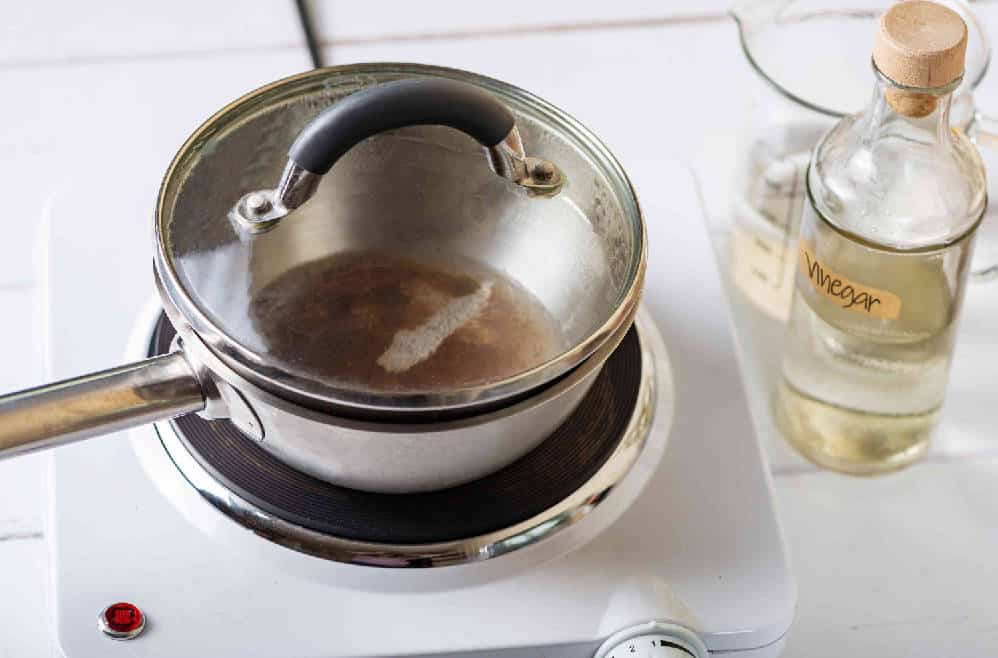
Vinegar has also been a go-to material in terms of cleaning and removing stains. Methods involving vinegar are usually easy and simple. For this method, you would need to prepare the following.
- 1 cup of vinegar, or as much as you need.
- A sponge (specifically for cleaning dishes or pans)
Steps:
- Use an ample amount of vinegar to cover the bottom of the pan.
- You can place the pan on the stove and let it simmer gently for 15 minutes.
- Let the pan sit and cool.
- After cooling down, you can start scrubbing gently using the cleaning sponge.
If you don’t feel like simmering vinegar, you can try this method instead.
Steps:
- Pour an ample amount of vinegar into the pan, just enough to cover the bottom of the pan.
- Leave the pan overnight.
- After soaking the pan in vinegar overnight, you can proceed to gently scrub with the sponge. This process will not only help in removing the burnt sugar, but will also leave the pan shiny after the process.
Fabric Softener Sheet Method
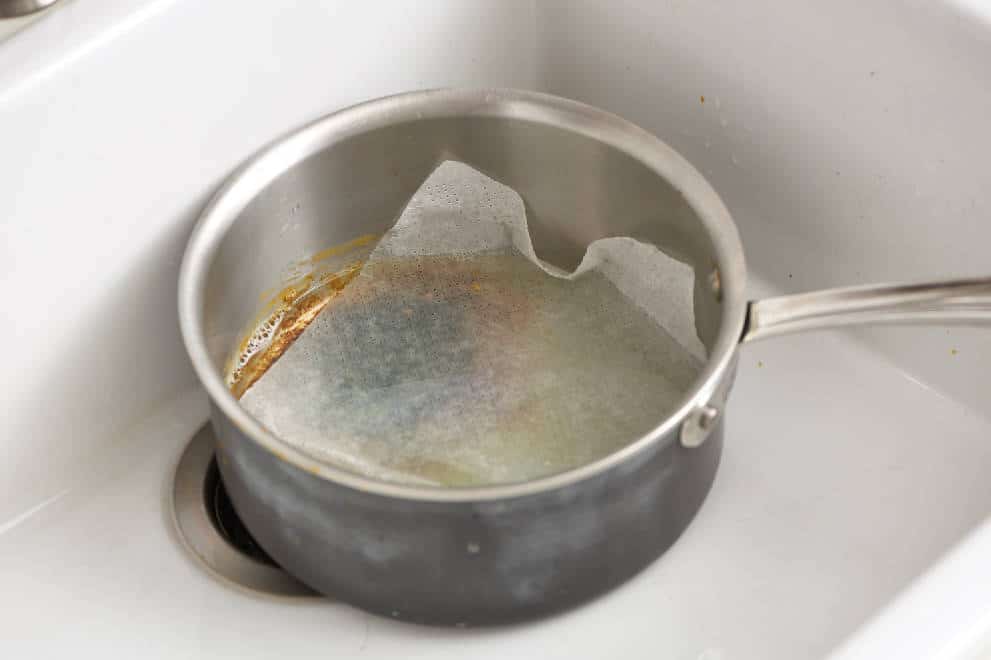
In the fabric softener sheets method, you will need to prepare the following:
- Fabric softener sheets (as much as you need)
- 1 tablespoon fabric softener (optional)
- Water (as much as needed)
- Sponge specifically designed for dish cleaning
Steps:
- Fill ¼ of the pan with water.
- Place the pan on the stove and set it in low heat until it reaches a boil.
- Remove it from the stove.
- Add the fabric softener sheet.
- You can leave the pan for a few hours, or you can leave it overnight.
- Get the sheet out and you can scrub the surface with the cleaning sponge.
If you are using fabric softener as a substitute, you can follow the following steps.
- Add it to the water as you are boiling it and stir thoroughly.
- Leave the pan for several hours or overnight.
- Wash it as you would.
Regardless of the method you choose, make sure to rinse the pan thoroughly with soapy water to avoid leaving any residue.
Other Ways of Removing Burnt Sugar from a Pan
Soaking
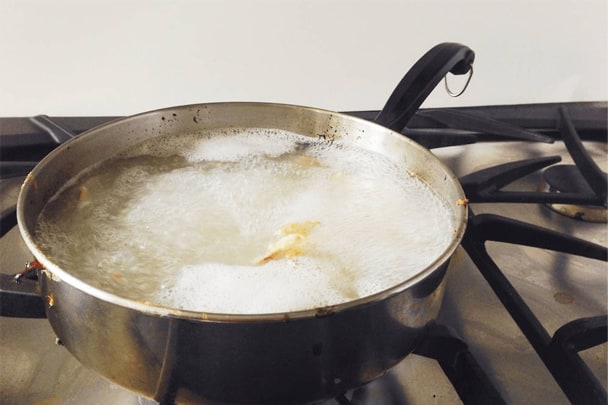
One easy and common way to remove any burnt or stuck ingredients is to soak them in water. To be more effective, add a bit of dish detergent to the mixture and let it soak overnight.
Another thing that you can do alongside soaking in soapy water is to coat the bottom of your pan with a thick layer of ketchup.
The ketchup’s acidity will eat away the burnt sugar and will assist in making it easier to clean. If you happen to be out of ketchup in your pantry, you can substitute the following:
- Coca cola
- Fabric softener
Dishwashing tablet
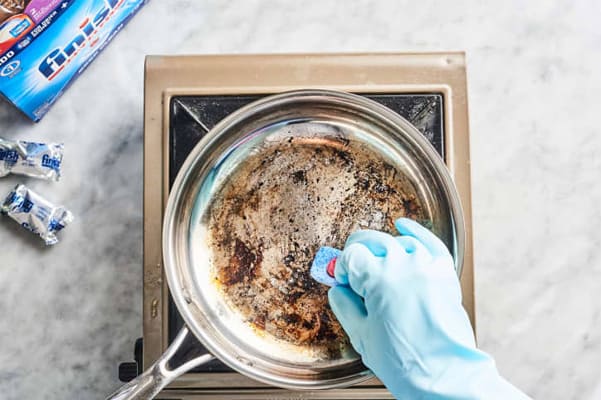
Dishwashing tablets can also be very helpful in removing tough stains. These tablets are really designed to break down caked-on food or ingredients. For this quick method, all you have to do is fill the pan with water and drop in the tablet like a bath bomb.
Place the pan on the stove and bring the water to a boil. When it boils, reduce it to a simmer for 10 minutes.
Cream of tartar
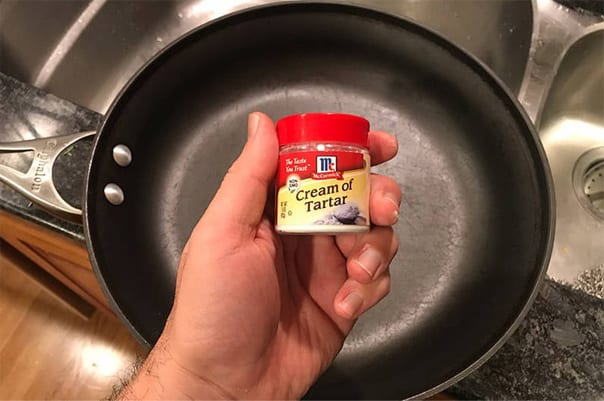
This baking ingredient is also mildly abrasive, which makes it a great help in scrubbing stuck burnt sugar off a pan. Cream of tartar is also acidic, which helps in breaking down caked-on food.
For this method, you would need to make a paste by mixing cream of tartar and white vinegar. Then, you can use the mixture to scrub the burnt sugar away.
Tin foil
If the sponge you are using is not capable of making a positive change on the stain-removal process, you can use tin foil as a substitute instead. You have to roll a piece of tinfoil into a ball. Sprinkle ample amounts of baking soda into the pan.
Then, use the rolled tin foil to scrub the pan. You would be surprised at how effective this ball scrub is. However, this method is limited to metal pans because using it on non-stick and ceramic finishes might cause scratches.
Summary
Getting tough stains out can be challenging work. Burnt sugar is a particularly hard stain to remove. This is a particularly common situation too, because sugar easily burns when left unattended.
Caramelized sugar is commonly used in desserts. In tough situations like having burnt sugar on the pan, it’s essential to know how to get burnt sugar off a pan.

Michael Johnson is the founder of Pan Mastery, Inspired by his blacksmith grandfather’s legacy has a deep appreciation for hand-crafted pots and pans, he provides invaluable guides, reviews, and recipes to enhance your culinary journey.

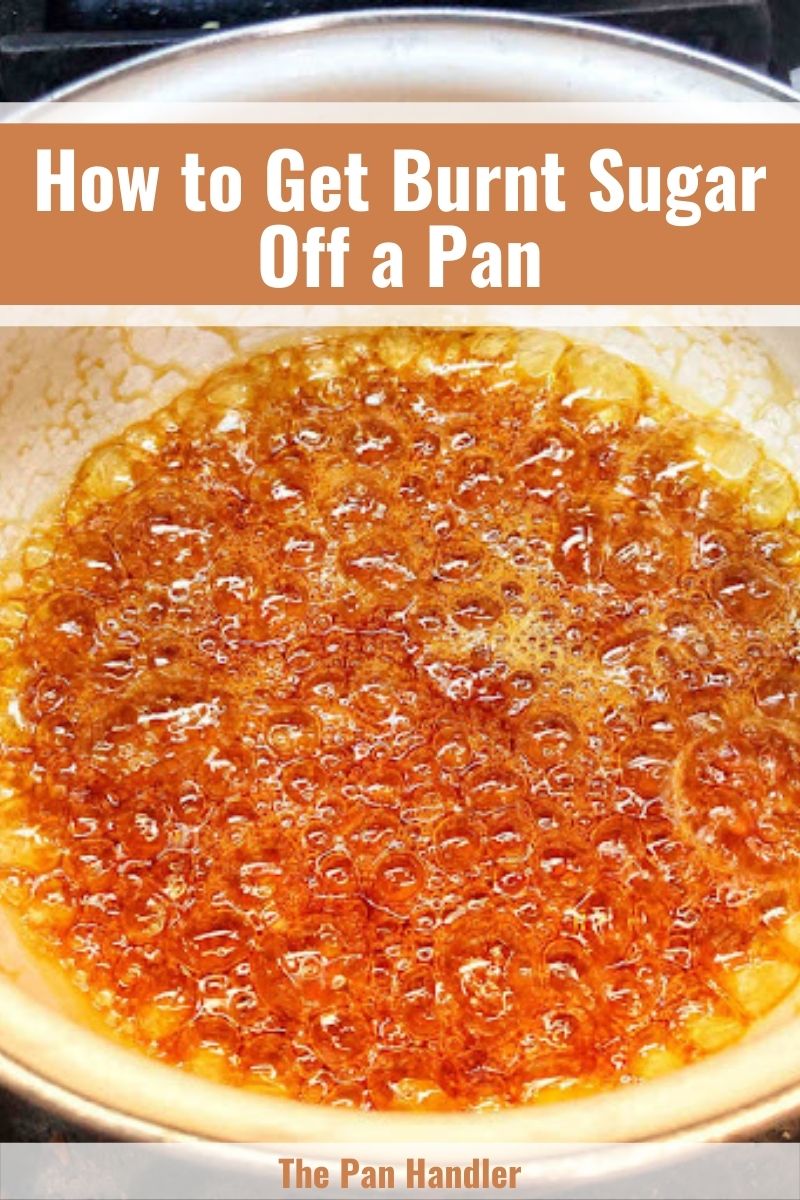
I accidentally left my tea mixed with sugar simmering on the stove and it literally burned the sugar with the tea bags to the bottom of the pan.
I tried the hydrogen peroxide method and I was amazed how fast and easy the burnt sugar was removed!
Hi there! 😊
Thanks for sharing your success with the hydrogen peroxide method. Your experience might encourage others to try it out, too! If you have any other tips or tricks you’d like to share, please feel free to do so. We’re all here to help each other.
Happy cooking and tea brewing! 🍵
Ok. I cooked a ham with a brown sugar coating and pineapple juice in the base of the roaster in a hot 400 oven. Left for church, came back and the pan was bone dry, black as can be. Both juice and sugar were black and splattered all over. Tried the baking soda method. Could not believe it! While I watched, the black bits started floating off. I maybe boiled it for 5 min, no more, because it wanted to boil over. I left it on the stove overnight. This stainless roaster was spotless when I rinsed it in the morning. Literally just wiped it with a wash cloth.
Hi Lynn,
Thank you for sharing your experience with the baking soda method! It’s great to hear that it worked so well for you in removing the burnt sugar and pineapple juice from your stainless steel roaster. Leaving it to soak overnight seems to have made the cleaning process even easier, allowing you to simply wipe it clean with a washcloth. This success story can encourage others to try the baking soda method when faced with similar burnt sugar situations in their pans.
You’re probably going to think I’m joking, but I’m completely serious. Urine has the correct pH to break up the molecules of burnt sugar, so I pissed into the pot and let it sit overnight.
The next morning, my wife complained that the tea I made tasted burned…
You did what I wanted to do but didn’t dare to do. Well done, brother!